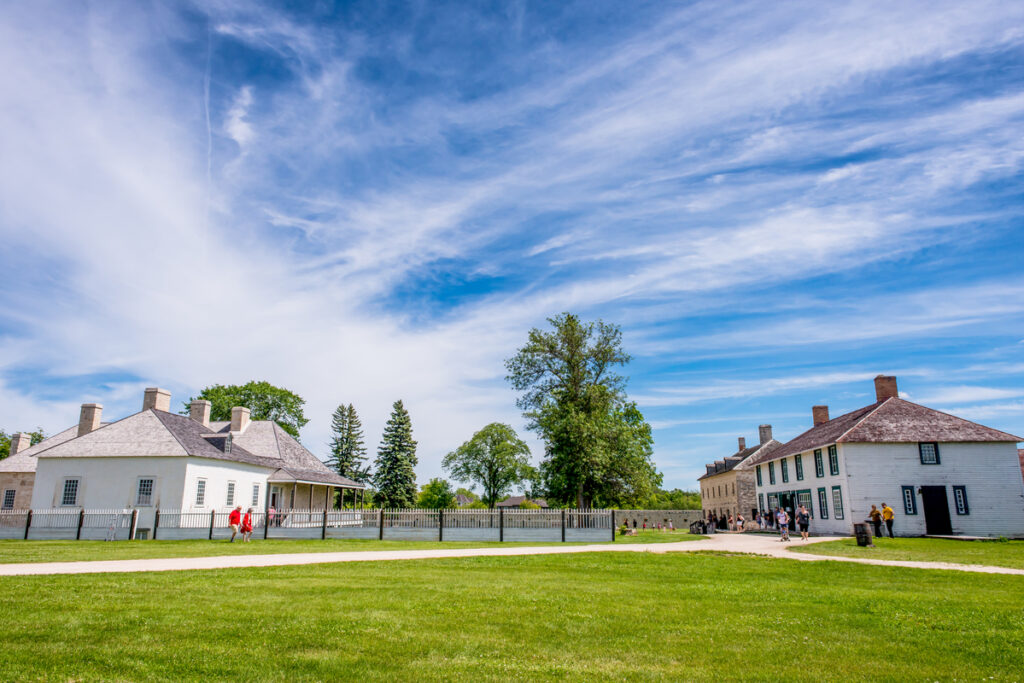Towering safely above the high-water mark of Manitoba’s infamous Red River sits Lower Fort Garry National Historic Site, a place of roughhewn Tyndall stone walls and sturdy historic buildings at the eastern edge of the vast Canadian prairies.
Lower Fort Garry is a place of firsts. Here, the first numbered treaty was signed with Treaty No. 1 First Nations. It is also the site of the first training centre for the North-West Mounted Police, Manitoba’s first prison and psychiatric facility, and the first commercial farm in Western Canada.
This is where a young Western Canada began to take shape. History will unfold before your eyes at this restored 19th-century fort, where skilled costumed interpreters evoke the spirit of the past on this Red River Settlement. Meet the governor of the Hudson’s Bay Company within the fort’s historic stone walls, barter with the company clerk or sit under an authentic birch bark dwelling and listen to stories from Indigenous Elders.
With an on-site restaurant, theatre and gift shop, it’ll take you days to fully absorb this majestic site full of grand history and elaborate character.

What did a fur trade post look like? These trading places, generally built with local wood, have evolved according to the period, the territory and the communities that operated them. Comparable to a fortified household, fur trade posts often sheltered craftsmen, skilled workers, labourers, merchants and some families, among others. They could count gardens, stables, workshops, storehouses but, mostly, a building dedicated to administrative, trading and political activities where the manager lived and worked. Lower Fort Garry National Historic Site is a vivid example of these well-organized places.
Travel from post to post! During Historic Places Days, have a walk through history at Lower Fort Garry and dive into a 19th-century fur trade post.
